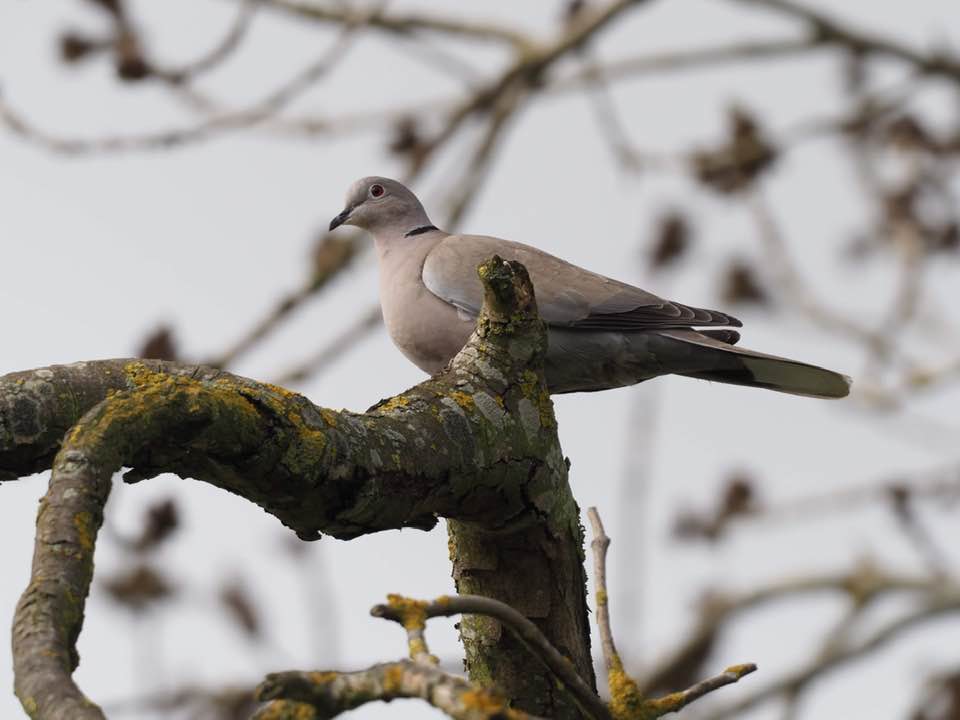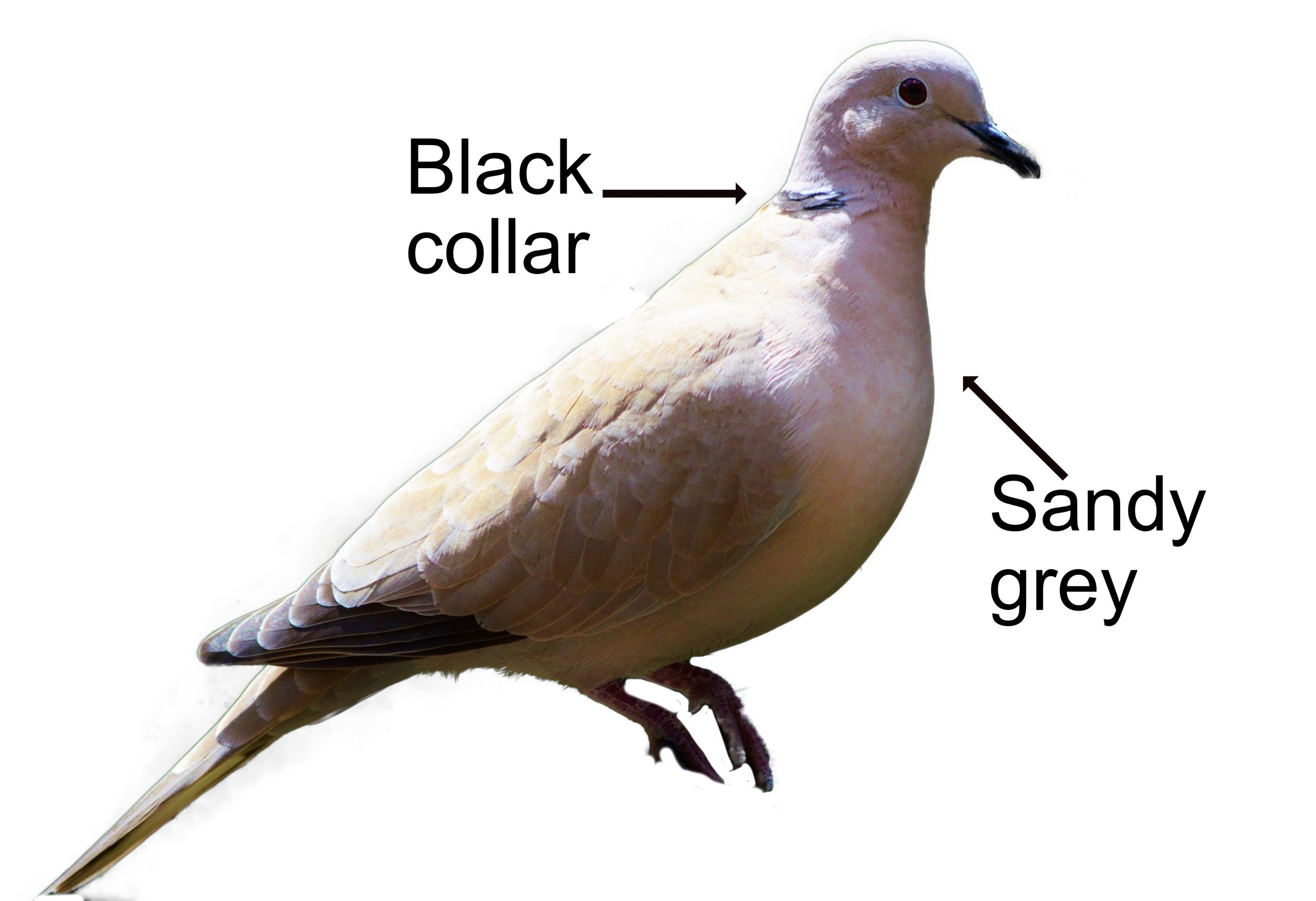
The football supporter of birds. A big fan of 'the reds' and, when possible, hangs out at Old Trafford. The Collared Dove is a neat, soft plumaged sandy-grey dove with a narrow black collar (where the supporter's scarf has rubbed), The Collared Dove is found on TV aerials, roofs, and football stadiums. It is not found much in trees as the view of the pitch from there is rubbish. They loudly chant "U-nite-ed, u-nite-ed, u-nite-ed!". From below, when flying, they show a broad white band at the base of the tail. They are not big fans of city centres (as there are too many hooligans) or mountainous areas (as there aren't many pitches).

The Collared Dove feeds on the ground enjoying a mainly veggie diet of grain, berries and grasses, favouring oats on colder match days. They prefer feeding on a bird table to a bird feeder.
When showing off to the girls in their display flight, the Collared Doves fly up and then glide down on spread wings, doing a perfect footballer's dive.
The nest is a delicate, thin structure of twigs, so thin that you can sometimes see the eggs through it from below! They can lay eggs anytime from February to October, which is a long breeding season. The female lays only 2 eggs but, because of the long breeding season, may have up to 5 broods in a year. The young hatch after 14 days and fly after another 14 days. They go off to watch footie about a week later. The young are fed on 'crop milk' which the parents regurgitate from special glands in their crops (a pouch near their throat). This is what allows them to raise young for such a long period when food is more scarce.
The Collared Dove is now a common resident following a rapid spread across Britain in the second half of the 20th century. There are about 1 million birds in the UK which is quite a supporters' club! They came up from Spain and the east where they were once Barcelona fans and then saw the light. The oldest known bird lived to be 16 and saw no less than four European championships.
The Latin name is ’streptopelia decaocto’. ’Streptopelia’ sounds like a nasty bacteria but is from the Ancient Greek ’streptos’ meaning 'collar' and ’peleia’ meaning 'dove'. The ’decaocto’ bit is from the Latin for 'eighteen' (deca = 10, octo = 8). The number comes from a Greek myth. A maid was unhappy that she was only paid 18 pieces a year and begged the gods to let the world know how little her mean mistress rewarded her. Thereupon Zeus created this dove for her. She was a bit miffed when it then went off to watch the footie.